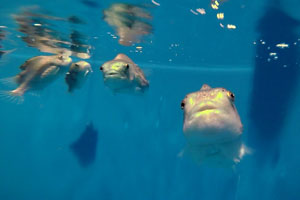How different are lumpfish from different origins?
New publication from SMARTAQUA team suggests that some lumpfish populations are very small and have low genetic diversity, which makes them particularly vulnerable to over-exploitation and genetic introgression.
The results, published this week, as Genetic and phenotypic differentiation of lumpfish (Cyclopterus lumpus) across the North Atlantic: implications for conservation and aquaculture, show that there are five genetically distinct groups of the species. These are located in the West Atlantic (USA and Canada), Mid Atlantic (Iceland), East Atlantic (Faroe Islands, Ireland, Scotland, Norway and Denmark), English Channel (England) and Baltic Sea (Sweden).
 Overall the study concluded that:
Overall the study concluded that:
1. lumpfish differ among regions
2. some populations appear to be small
3. genetically distinct populations should not be translocated if there is a risk of escapes (precautionary approach)
The full article can be accessed here
2018. Genetic and phenotypic differentiation of lumpfish (Cyclopterus lumpus) across the North Atlantic: implications for conservation and aquaculture. PeerJ 6:e5974
Would you like to learn more about cleaner fish and the role of lumpfish in salmon farms?
